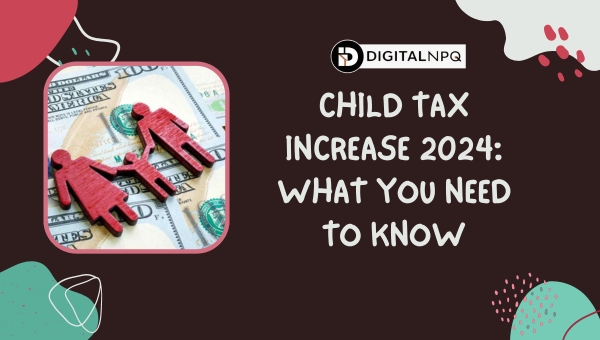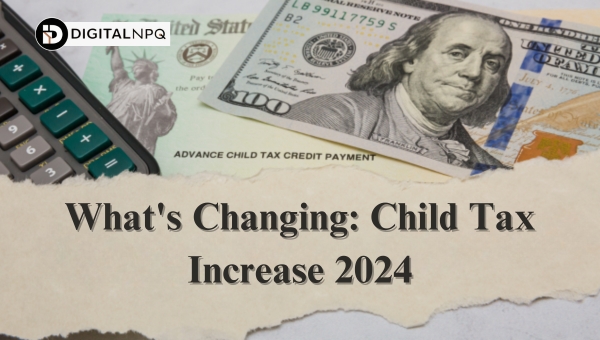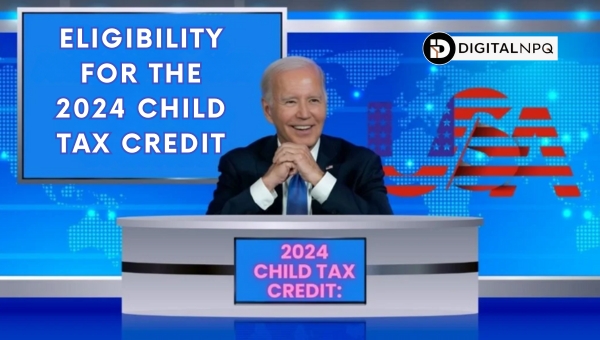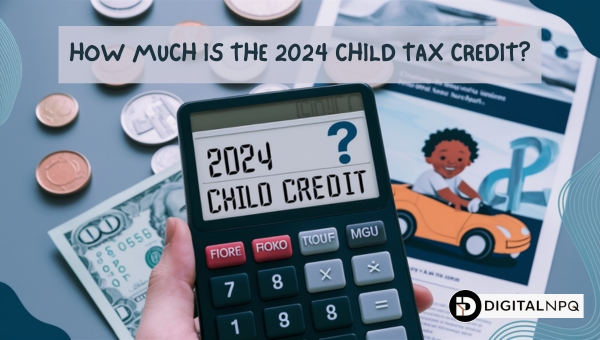Child Tax Increase 2024: What You Need to Know!

The child tax increase in 2024 brings significant changes that could impact many families. This article delves into the new details, proposed enhancements, and key changes expected.
We’ll also cover eligibility criteria, how much you can claim, the filing process, and important legislative updates. Stay informed and ensure you’re prepared to benefit from these updates.
What’s Changing: Child Tax Increase 2024
The Child Tax Credit is set to undergo notable changes in 2024, affecting many families. The updates aim to provide more financial assistance and make credit more accessible.

This includes adjustments in the refundable portion, income eligibility, and the way families can determine their eligibility. These changes reflect ongoing efforts to support families, especially those with lower incomes.
Wondering about the specific details? We’ll delve into the proposed enhancements and key changes below.
Proposed Enhancements
The enhancements to the child tax credit in 2024 offer several new features compared to previous years:
- Increased Refundable Portion: The maximum refundable amount has been raised to $1,900, an increase from $1,800 in 2023.
- Income Flexibility: Families can now choose to base their eligibility on either their current year’s income or the previous year’s income.
- Inflation Adjustments: The credit will be adjusted for inflation, ensuring it keeps pace with rising living costs.
Key Changes to Expect
Taxpayers should be aware of the following key changes in the child tax credit for 2024:
- The refundable portion of the credit will increase to $1,900.
- Families have the option to use income from the prior year for eligibility.
- Adjustments for inflation will be implemented, helping the credit maintain its value.
- The credit remains nonrefundable beyond the refundable portion, meaning excess amounts won’t be refunded.
Understanding these changes is crucial for families aiming to make the most of the child tax credit in 2024.
Eligibility for the 2024 Child Tax Credit
Understanding eligibility for the 2024 Child Tax Credit is essential for families planning their finances.

The rules have specific criteria that must be met to qualify. Let’s dive into the key aspects.
Income Limits
Income limits play a significant role in determining eligibility for the child tax credit. For 2024, the limits are set as follows:
- Married couples filing jointly: Up to $400,000
- All other filers: Up to $200,000
Once these thresholds are exceeded, the credit begins to phase out at a rate of $50 for every $1,000 of income above the limit.
This phasing out can affect various families differently, especially those with fluctuating incomes.
Qualifying Dependents
To claim the child tax credit, it is essential to know who qualifies as a dependent.
Here are the criteria:
- Age: Must be under 17 at the end of the tax year
- Relationship: Must be the taxpayer’s child, stepchild, foster child, sibling, or a descendant of any of these
- Residency: Must have lived with the taxpayer for more than half of the tax year
- Support: The taxpayer must provide more than half of the child’s financial support
- Citizenship: Must be a U.S. citizen, national, or resident alien
These rules ensure that only those who meet specific criteria can benefit from the credit, providing targeted support to eligible families.
How Much is the 2024 Child Tax Credit?
The Child Tax Credit for 2024 offers significant financial relief for families. Under the new rules, families can claim up to $2,000 per qualifying child.

This amount is designed to help cover the costs associated with raising children, making it easier for families to manage their finances.
Variations Based on Income
Income Levels:
- Families with modified adjusted gross income (MAGI) up to $400,000 for married couples filing jointly and $200,000 for all other filers are eligible for the full credit.
- For incomes above these thresholds, the credit begins to phase out by $50 for every $1,000 of income.
Refundable Portion:
- The 2024 child tax credit includes a refundable portion of up to $1,900. This means families can receive a refund even if they owe no taxes, offering additional support especially to lower-income households.
Key Points to Remember
By understanding these details, families can better plan and take full advantage of the Child Tax Credit for 2024, ensuring they maximize their benefits.
- The maximum credit per child is $2,000.
- The refundable portion has increased to $1,900 in 2024.
- Income limits are set at $400,000 for joint filers and $200,000 for others.
- Credits phase out at a rate of $50 per $1,000 of income over the limit.
Claiming the 2024 Child Tax Credit
Navigating the process of claiming the child tax increase for 2024 can seem overwhelming, but we’ve got you covered. Understanding how to file and being aware of important deadlines will ensure you receive the benefits you deserve. Let’s dive into the specifics to make the process as smooth as possible.
How to File?
To claim the 2024 child tax credit, follow these steps:
- File IRS Form 1040: This is the standard form for individual income tax returns.
- Gather Documentation: Ensure you have Social Security numbers for all qualifying children.
- Proof of Income: Collect all necessary income statements.
- Meet Eligibility Criteria: Double-check that you meet all requirements to avoid delays.
Important Deadlines
Here are the crucial deadlines you need to remember:
- Tax Filing Deadline: April 15, 2025.
- Early Filing: Consider filing early to resolve any potential issues.
- Documentation Submission: Ensure all documents are submitted by the filing deadline to avoid delays.
Understanding these steps and deadlines will help you effectively claim the 2024 child tax credit.
Legislative Updates
Navigating the legislative landscape for the child tax increase 2024 can be complex. It’s essential to understand who is backing these changes and what impacts they may have.
Congressional Support and Opposition
The proposed changes to the child tax credit have sparked a mix of support and opposition within Congress. Key supporters include:
- Democratic Representatives: Many Democrats are advocating for the enhancements, emphasizing the potential benefits for low-income families.
- Republican Representatives: Some Republicans also support the changes but focus on ensuring fiscal responsibility.
However, there are also notable opponents:
- Fiscal Conservatives: Expressing concerns about the budgetary impact.
- Some Moderates: Worry about the long-term sustainability of the increased credits.
Potential Impact and Timeline
Understanding the potential impact and timeline of these legislative changes is crucial for families planning their finances. Key points to consider include:
- Impact on Families: The changes aim to reduce child poverty and provide greater financial support, particularly for lower-income households.
- Timeline: If approved, the new rules will take effect for the 2024 tax year, meaning families can benefit when filing their returns in early 2025.
These updates could significantly affect millions of families, offering much-needed financial relief and support.
FAQs
Will taxes be higher in 2024?
In 2024, some tax changes may affect your overall tax liability. However, individual tax burdens depend on various factors including income, deductions, and credits.
When to expect a tax refund in 2024?
Tax refunds for 2024 are generally processed within 21 days of filing, provided there are no issues with the return. Filing electronically and opting for direct deposit can expedite the process.
What is the cash relief for 2024?
Cash relief in 2024 includes the enhanced child tax credit. Families can claim up to $2,000 per qualifying child, with a refundable portion of up to $1,900, offering significant financial support.
Conclusion
The child tax increase for 2024 brings notable changes aimed at providing enhanced financial support for families. With increased refundable amounts and adjustments for inflation, these updates are designed to help more families benefit from the credit.
Understanding the new eligibility criteria and the specific enhancements will be crucial for taxpayers. Staying informed and prepared can ensure you maximize these benefits for your family.
For more insights and detailed guides on tax credits and other financial topics, be sure to explore our other blog posts. Stay updated and make the most of your financial opportunities!
